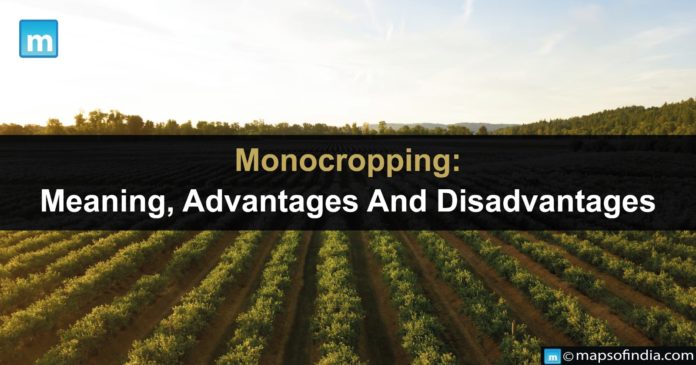Monocropping, or monoculture, is a farming practice where a single crop is cultivated on a large scale over a prolonged period in a given area. This type of farming is common in modern agriculture and is often used to maximise productivity and profits. In this article, we explore the advantages and disadvantages of monocropping.
Advantages of Monocropping
-
Increased Efficiency
Monocropping can increase efficiency in farming practices. By cultivating a single crop, farmers can use specialised equipment and techniques that are designed for that particular crop. This can lead to higher yields, lower costs, and increased profits.
-
Simplified Management
Monocropping can simplify the management of crops by reducing the complexity of farming practices. Farmers can focus on a single crop, making it easier to manage pest and disease control, irrigation, and fertiliser application.
-
Consistent Quality
Monocropping can lead to consistent crop quality. Farmers can develop specialised skills and knowledge by focusing on a single crop that can lead to more consistent yields and higher-quality crops.
-
Marketability
Monocropping can make crops more marketable. By producing large quantities of a single crop, farmers can take advantage of economies of scale, leading to lower production costs and higher profits.
Disadvantages of Monocropping
-
Soil Degradation
Monocropping can lead to soil degradation. When a single crop is grown over a prolonged period, it can deplete the soil of nutrients and organic matter. This can result in decreased soil fertility, reduced yields, and increased susceptibility to pests and diseases.
-
Pest and Disease Buildup
Monocropping can lead to the buildup of pests and diseases. When a single crop is grown over a prolonged period, it can create a favourable environment for pests and diseases to thrive. This can increase pesticide use, harming the environment and human health.
-
Lack of Biodiversity
Monocropping can lead to a lack of biodiversity in farming systems. When a single crop is grown over a prolonged period, it can reduce the diversity of plant and animal life in the area. This can reduce ecosystem services, such as pollination and soil health.
-
Market Vulnerability
Monocropping can make crops vulnerable to market fluctuations. When a single crop is grown on a large scale, it can create a glut in the market, leading to lower prices and reduced profits for farmers.
-
Alternatives to Monocropping
Several alternatives to monocropping can help reduce the negative impacts of this farming practice. These include:
-
Crop Rotation
Crop rotation involves growing different crops on the same land over time. This can help improve soil health, reduce pests and diseases, and increase yields.
-
Polyculture
Polyculture is the practise of producing different types of crops in the same place. This can help boost bio-diversity, minimise pesticide consumption, and promote soil health.
-
Agroforestry
Agroforestry involves growing crops and trees together in the same area. Selling timber can help increase biodiversity, reduce soil erosion, and provide additional income.
-
Intercropping
Cultivating multiple crops within a single area is known as intercropping. This can aid in the reduction of pest and disease pressure, the improvement of soil health, and the growth of yields.




